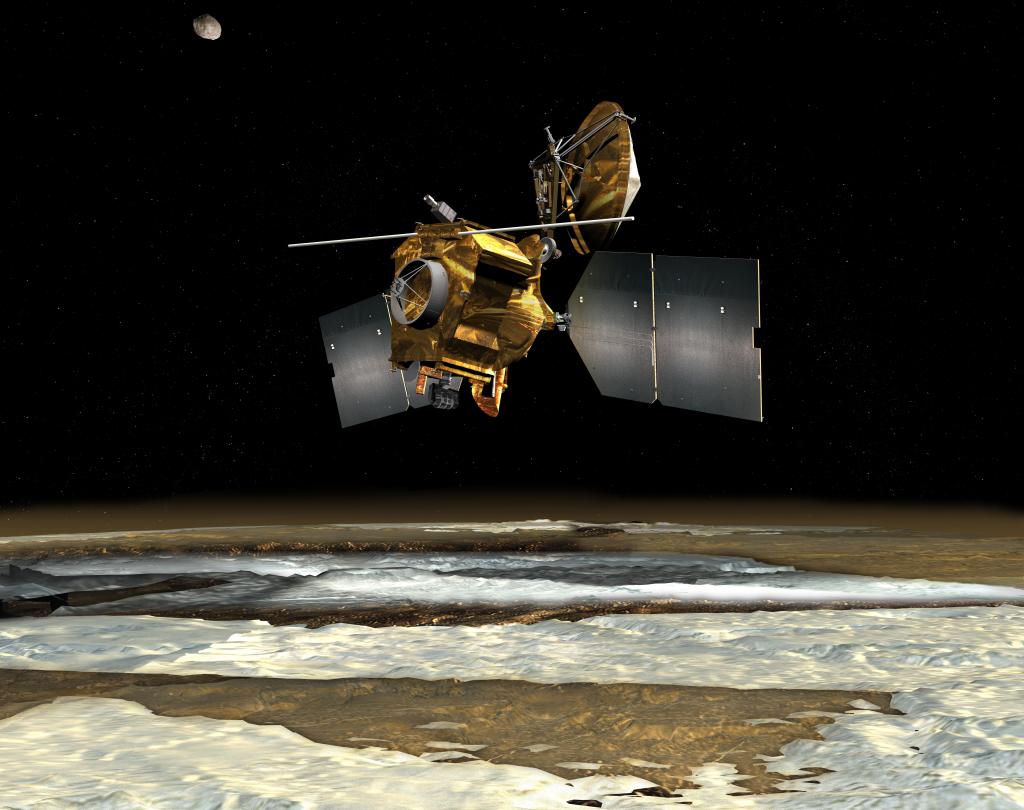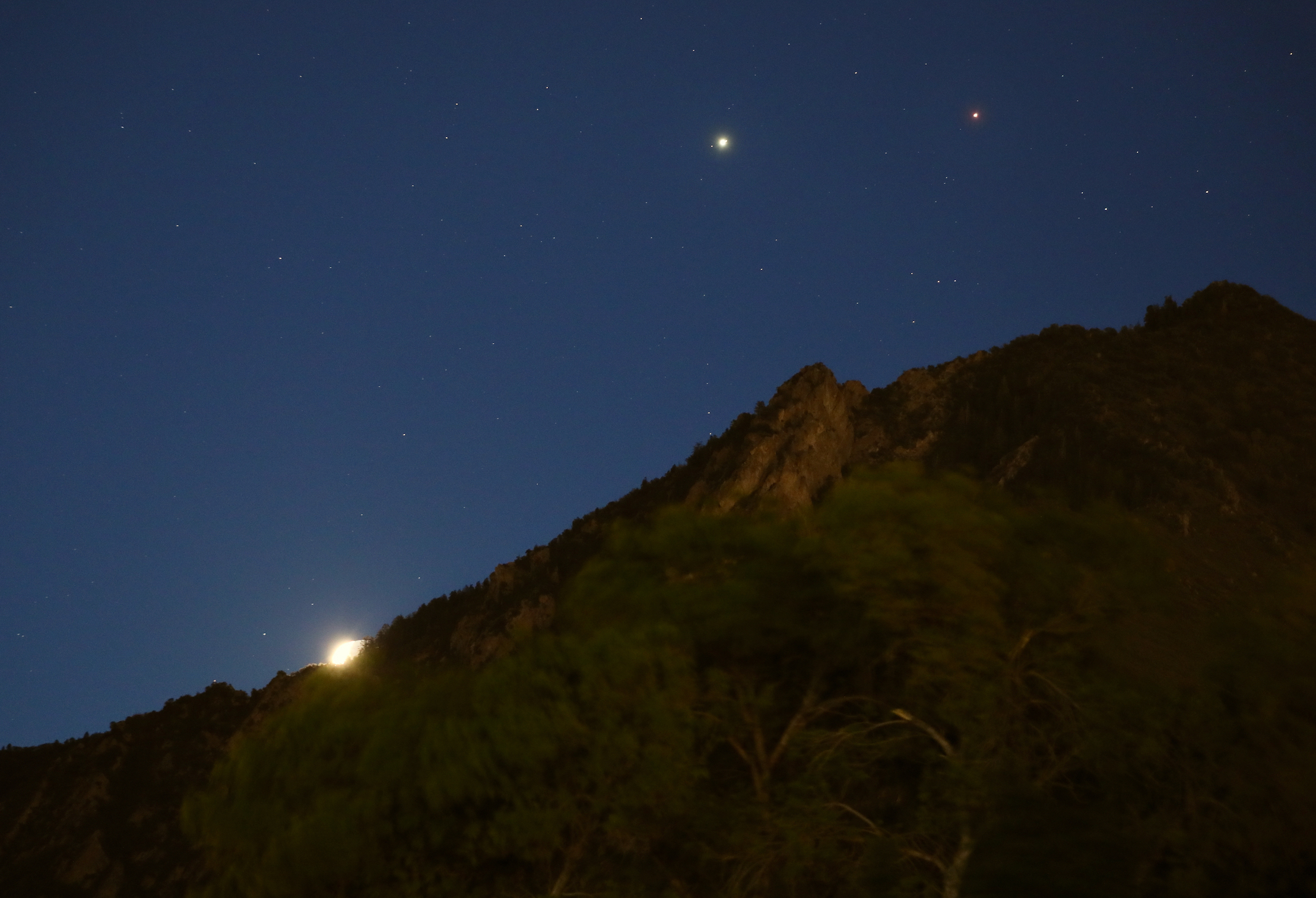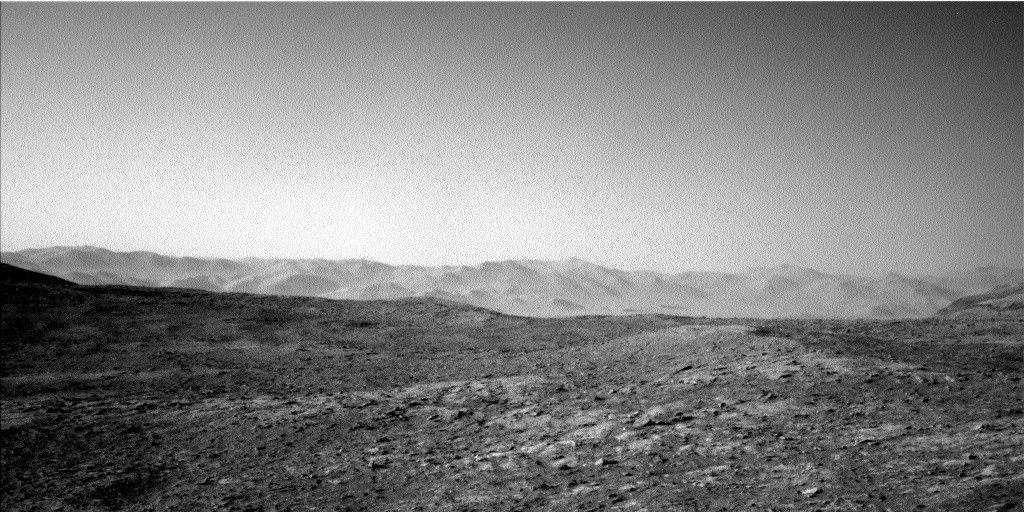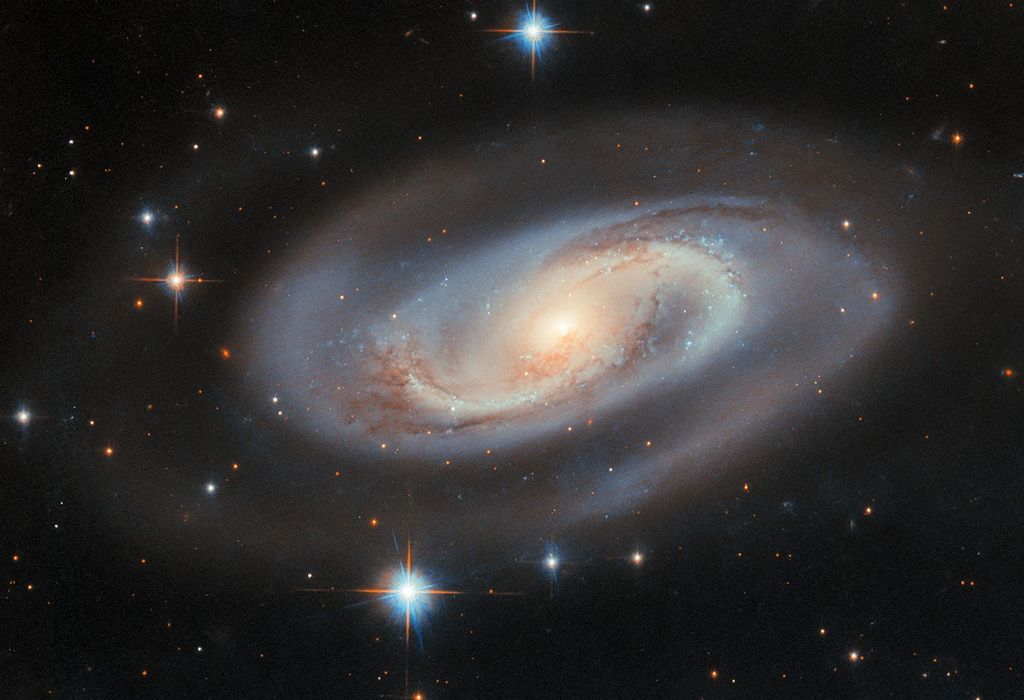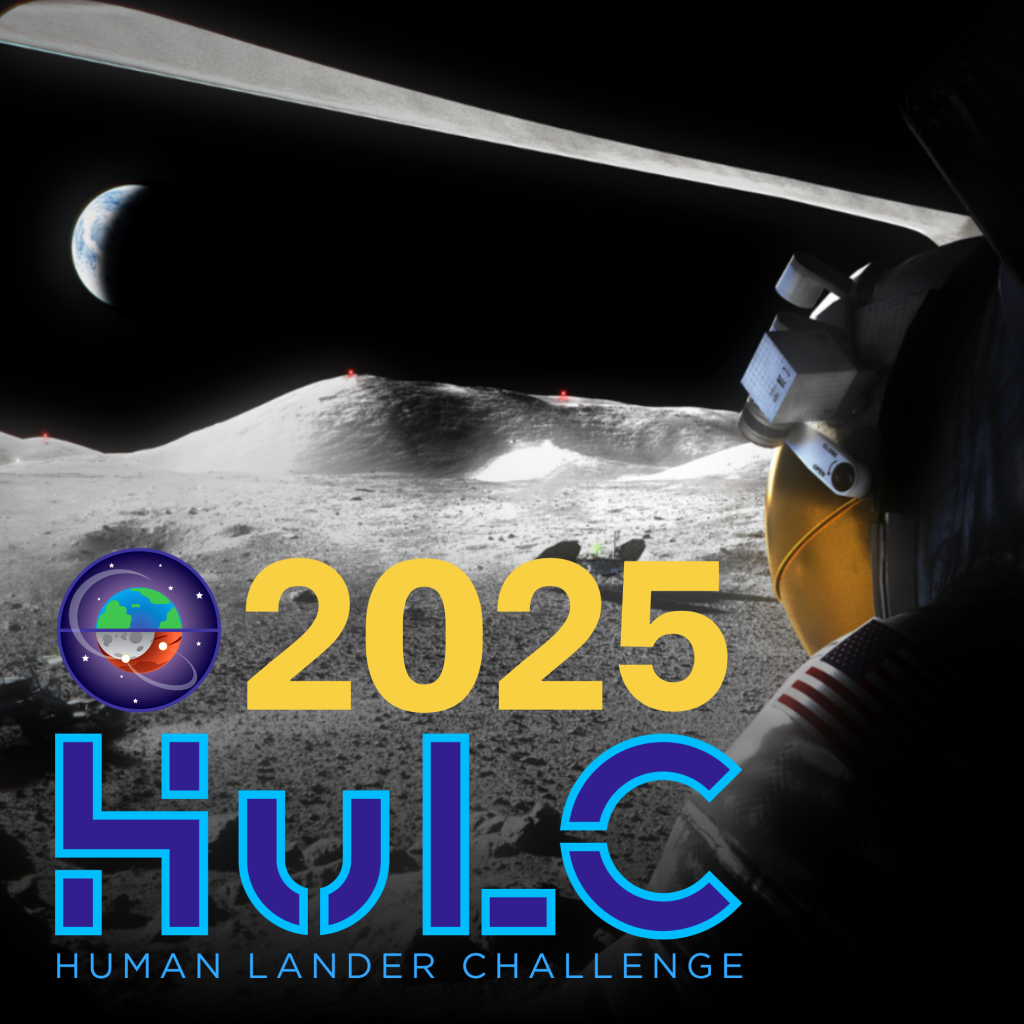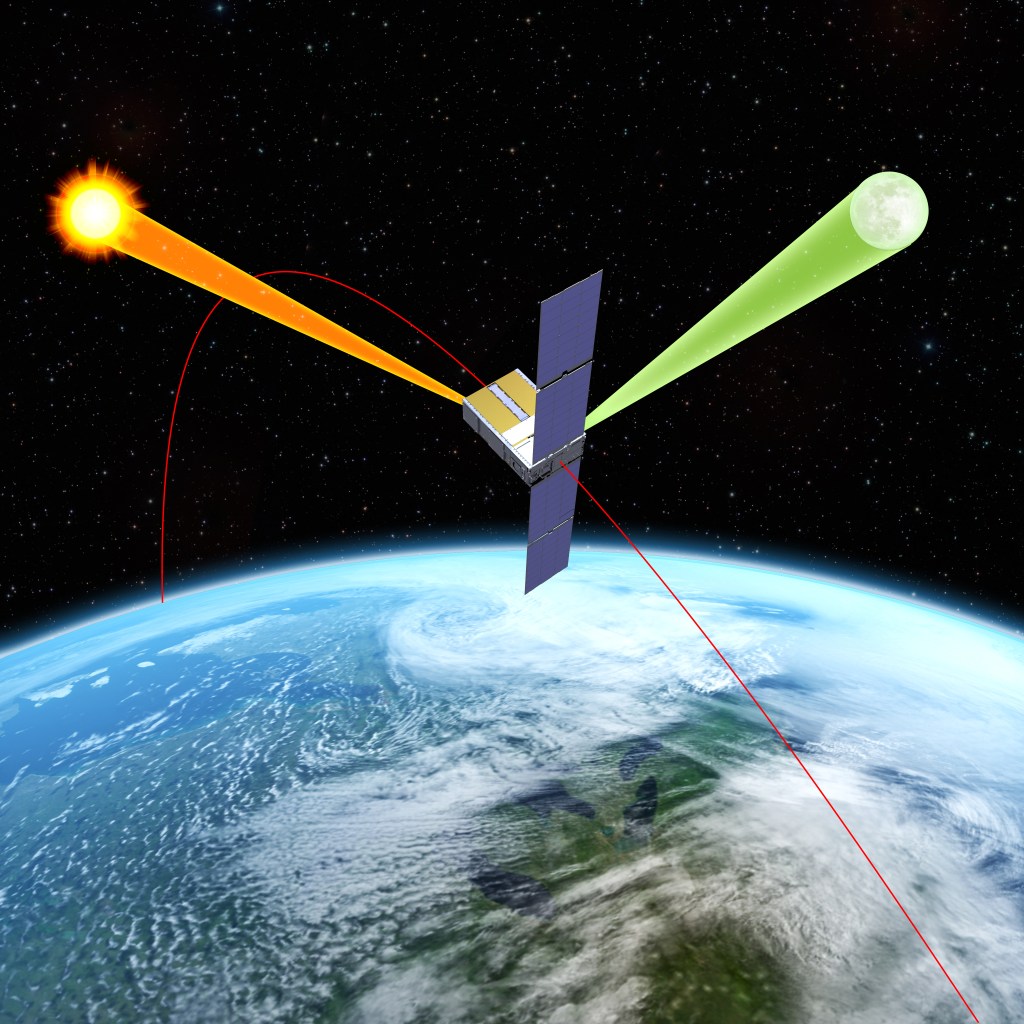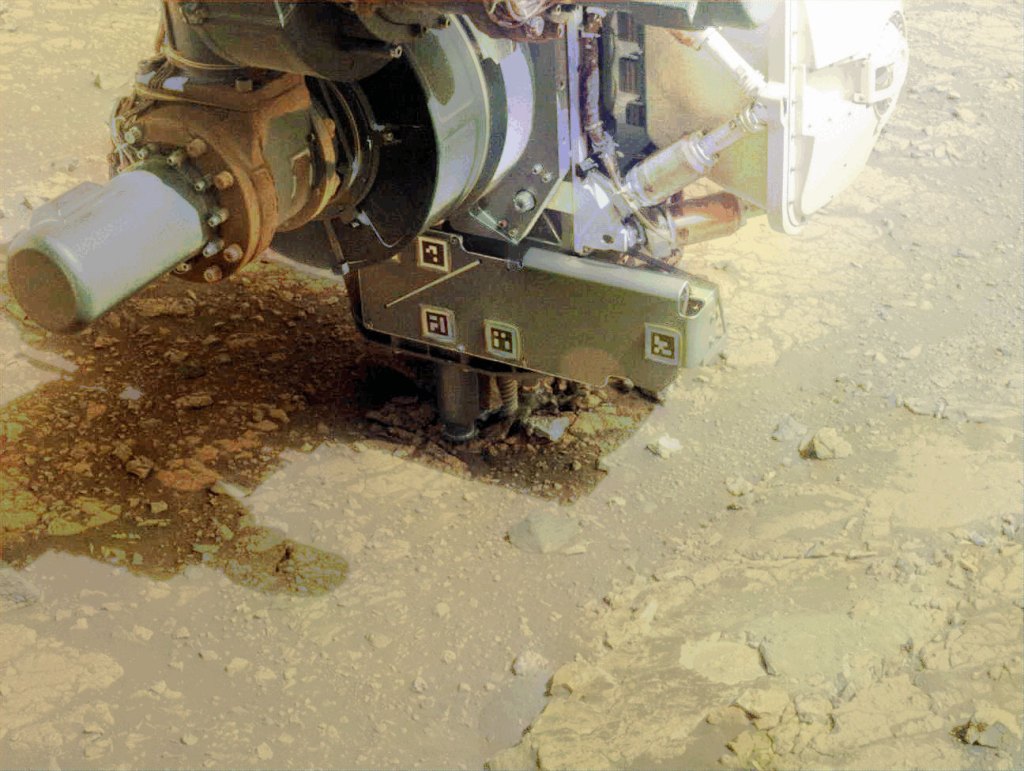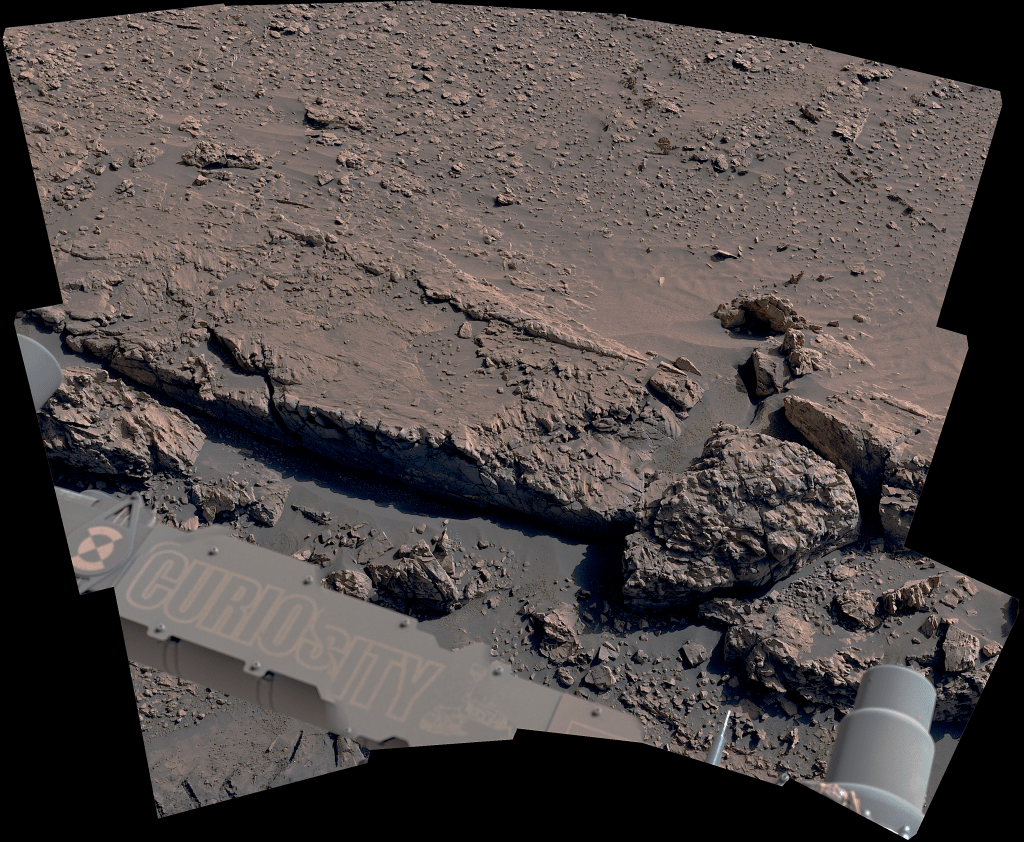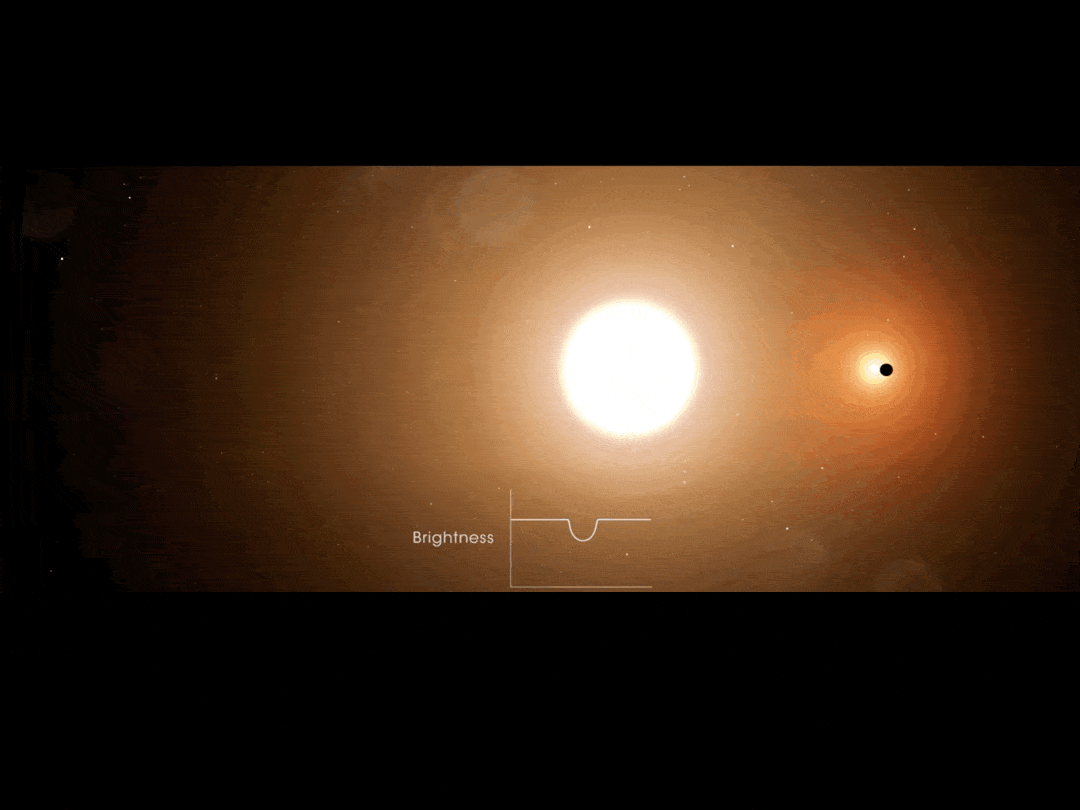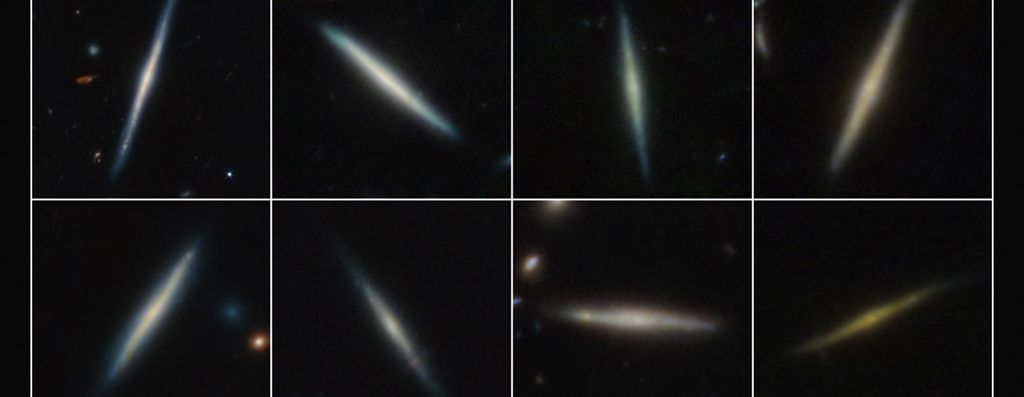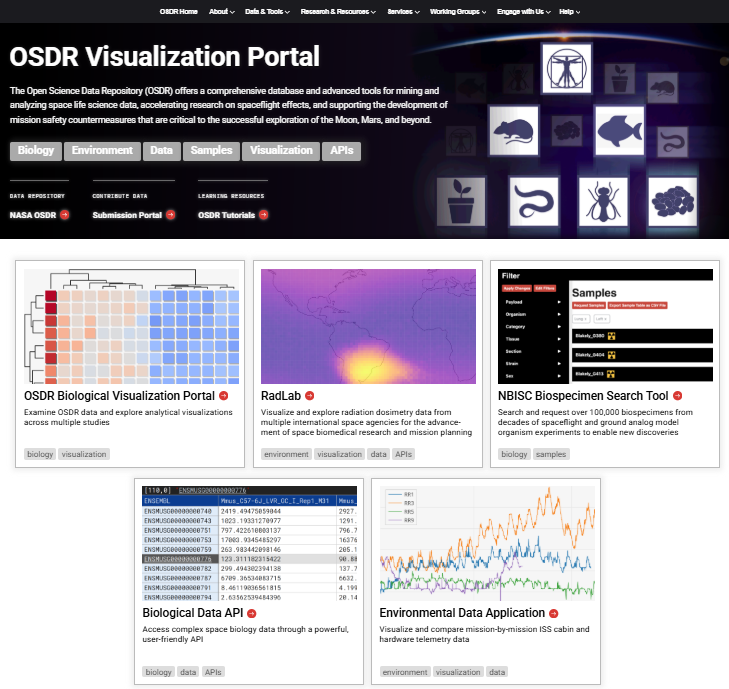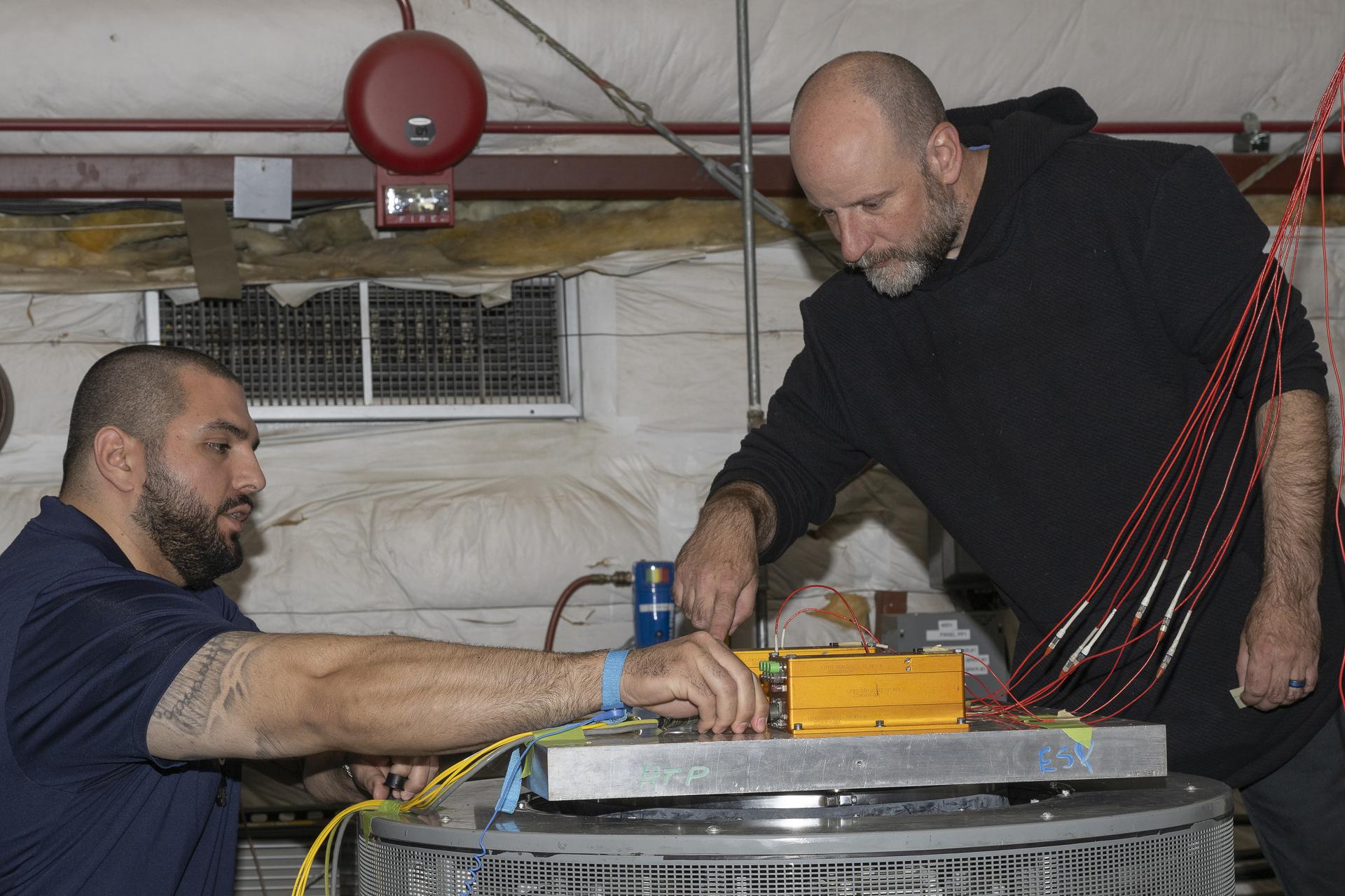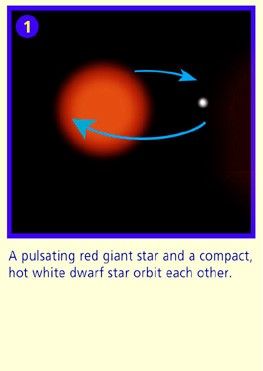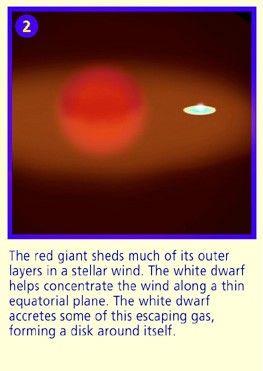1 min read
Symbiotic Star Blows Bubbles into Space
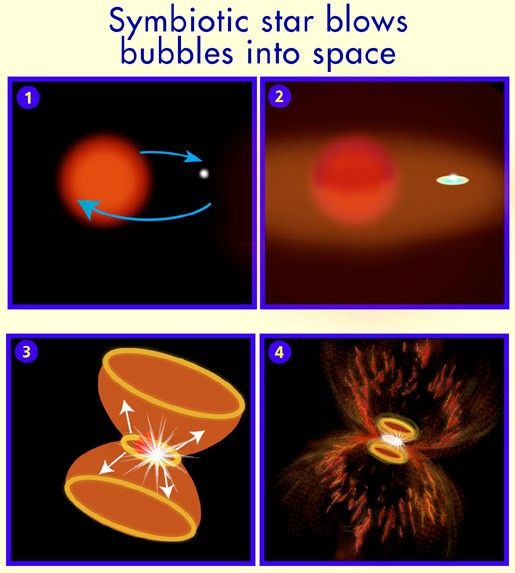
Panel 1: A pulsating red giant star and a compact, hot white dwarf star orbit each other.
Panel 2: The red giant sheds much of its outer layers in a stellar wind. The white dwarf helps concentrate the wind along a thin equatorial plane. The white dwarf accretes some of this escaping gas forming a disk around the itself.
Panel 3: When enough gas accumulates on the white dwarf's surface it explodes as a nova outburst. Most of the hot gas forms a pair of expanding bubbles above and below the equatorial disk.
Panel 4: A few thousand years after the bubbles expand into space, the white dwarf goes through another nova outburst and makes another pair of bubbles, which form a distinctive hourglass shape.
- Release DateAugust 24, 1999
- Science ReleaseSymbiotic Star Blows Bubbles into Space
- CreditScience Release Credit: Romano Corradi, Instituto de Astrofisica de Canarias, Tenerife, Spain; Mario Livio, Space Telescope Science Institute, Baltimore, Md.; Ulisse Munari, Osservatorio Astronomico di Padova-Asiago, Italy; Hugo Schwarz, Nordic Optical Telescope, Canarias, Spain; and NASA
Related Images & Videos

Symbiotic Star in the Southern Crab Nebula (He2-104) Blows Bubbles into Space
A tempestuous relationship between an unlikely pair of stars may have created an oddly shaped, gaseous nebula that resembles an hourglass nestled within an hourglass. Images taken with Earth-based telescopes have shown the larger, hourglass-shaped nebula. But this picture, taken...
Share
Details
Claire Andreoli
NASA’s Goddard Space Flight Center
Greenbelt, Maryland
claire.andreoli@nasa.gov

